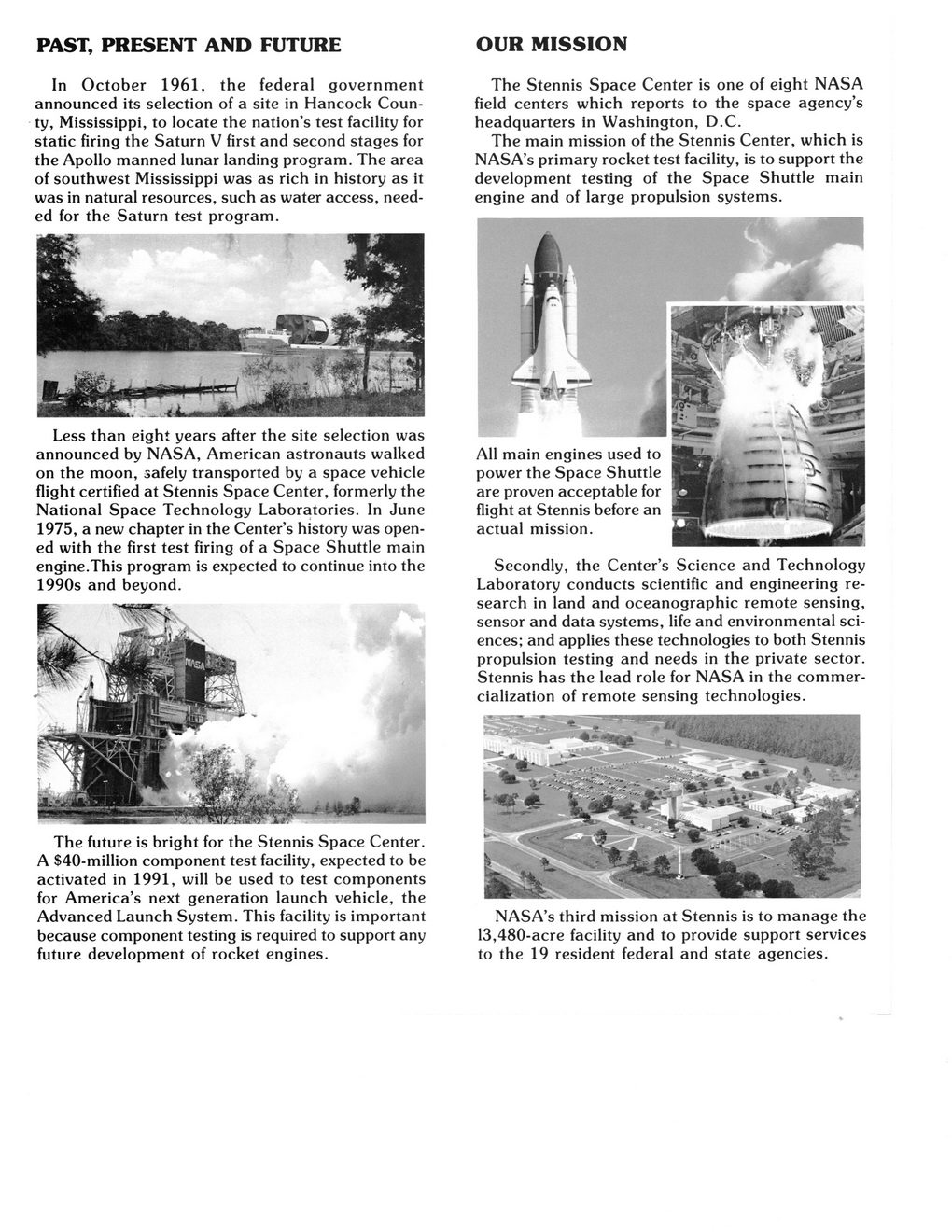This text was obtained via automated optical character recognition.
It has not been edited and may therefore contain several errors.
PAST, PRESENT AND FUTURE OUR MISSION In October 1961, the federal government announced its selection of a site in Hancock County, Mississippi, to locate the nation’s test facility for static firing the Saturn V first and second stages for the Apollo manned lunar landing program. The area of southwest Mississippi was as rich in history as it was in natural resources, such as water access, needed for the Saturn test program. Less than eight years after the site selection was announced by NASA, American astronauts walked on the moon, safely transported by a space vehicle flight certified at Stennis Space Center, formerly the National Space Technology Laboratories. In June 1975, a new chapter in the Center’s history was opened with the first test firing of a Space Shuttle main engine.This program is expected to continue into the 1990s and beyond. The future is bright for the Stennis Space Center. A $40-million component test facility, expected to be activated in 1991, will be used to test components for America’s next generation launch vehicle, the Advanced Launch System. This facility is important because component testing is required to support any future development of rocket engines. The Stennis Space Center is one of eight NASA field centers which reports to the space agency’s headquarters in Washington, D.C. The main mission of the Stennis Center, which is NASA’s primary rocket test facility, is to support the development testing of the Space Shuttle main engine and of large propulsion systems. All main engines used to power the Space Shuttle are proven acceptable for flight at Stennis before an actual mission. Secondly, the Center’s Science and Technology Laboratory conducts scientific and engineering research in land and oceanographic remote sensing, sensor and data systems, life and environmental sciences; and applies these technologies to both Stennis propulsion testing and needs in the private sector. Stennis has the lead role for NASA in the commercialization of remote sensing technologies. NASA’s third mission at Stennis is to manage the 13,480-acre facility and to provide support services to the 19 resident federal and state agencies.

NASA Document (035)